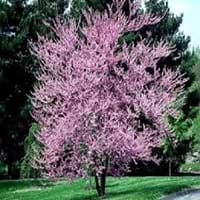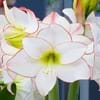Life Span
Perennial
Perennial
Type
Bulb or Corm or Tuber
Tree
Origin
Hybrid origin
Northeastern United States, Mid-Atlantic United States, Southeastern United States, North-Central United States, Central United States, South-Central United States, Canada
Types
Not Available
Not Available
Habitat
tropical environments
Alpine Meadows, shaded woods
USDA Hardiness Zone
8-11
4-9
AHS Heat Zone
Not Available
9-5
Sunset Zone
21,22
1a, 1b, 2a, 2b, 3a, 3b, 7, 8, 9, 10, 11, 12, 13, 14, 15, 16, 17, 18, 19, 20
Habit
Clump-Forming
Oval or Rounded
Flower Color
White, Red, Light Pink
Red, Purple, Violet
Flower Color Modifier
Bicolor
Bicolor
Fruit Color
Green, Brown
Brown, Chocolate
Leaf Color in Spring
Green, Dark Green
Purple, Plum
Leaf Color in Summer
Light Green
Green, Dark Green
Leaf Color in Fall
Several shades of Green
Yellow, Yellow green
Leaf Color in Winter
Light Green
Not Available
Leaf Shape
Long Linear
Heart-shaped
Plant Season
Spring, Summer, Winter
Spring, Summer, Fall
Sunlight
Full Sun, Partial Sun
Full Sun, Partial Sun
Growth Rate
Medium
Medium
Type of Soil
Loam, Sand
Clay, Loam, Sand
The pH of Soil
Acidic, Neutral
Acidic, Neutral, Alkaline
Soil Drainage
Well drained
Well drained
Bloom Time
Not Available
Early Spring, Spring, Late Spring
Tolerances
Deer resistant
Drought
Where to Plant?
Container, Ground, Pot
Ground
How to Plant?
Divison, From Rhizomes, Tubers
Cuttings
Plant Maintenance
Low
Medium
Watering Requirements
Average Water Needs
Keep the ground moist but not water-logged
In Summer
Lots of watering
Lots of watering
In Spring
Moderate
Moderate
In Winter
Average Water
Average Water
Soil pH
Acidic, Neutral
Acidic, Neutral, Alkaline
Soil Type
Loam, Sand
Clay, Loam, Sand
Soil Drainage Capacity
Well drained
Well drained
Sun Exposure
Full Sun, Partial Sun
Full Sun, Partial Sun
Pruning
Cut or pinch the stems, Remove damaged leaves, Remove dead branches, Remove dead leaves
Prune to stimulate growth, Remove damaged leaves, Remove dead branches, Remove dead leaves
Fertilizers
as it is a flowering plant, use high phosphorous content fertilizer, Nitrogen, Phosphorous, Potassium, Requires high amount of nitrogen
All-Purpose Liquid Fertilizer
Pests and Diseases
Aphids, Grasshoppers, Mealybugs, Mites, Red blotch, Slugs, Snails
Bacterial Canker, Verticillium Wilt
Plant Tolerance
Deer resistant
Drought
Flower Petal Number
Not Available
Single
Edible Fruit
Not Available
No
Fragrant Flower
Not Available
Yes
Foliage Texture
Medium
Medium
Foliage Sheen
Glossy
Glossy
Attracts
Bees, Butterflies, Hummingbirds
Birds
Allergy
poisonous if ingested
Unknown
Aesthetic Uses
Beautification, Bouquets, Cottage Garden, Showy Purposes
Beautification, Formal Garden, Ground Cover, Showy Purposes
Beauty Benefits
Not Available
Not Available
Environmental Uses
Not Available
Air purification, Food for animals, Food for birds, Nesting sites for birds
Medicinal Uses
Not Available
Unknown
Part of Plant Used
Flowers
Not Applicable
Other Uses
Used as Ornamental plant, Used for bedding in gardens
Beneficial species for attracting pollinators, Used as Ornamental plant
Used As Indoor Plant
Yes
No
Used As Outdoor Plant
Yes
Yes
Garden Design
Container, Cutflower, Houseplant, Mixed Border, Tropical
Feature Plant, Foundation, Mixed Border, Shade Trees
Botanical Name
HIPPEASTRUM 'Picotee'
CERCIS canadensis 'Forest Pansy'
Common Name
Florist Amaryllis, Hippeastrum, Picotee Hippeastrum
Eastern Redbud, Forest Pansy Redbud
In Hindi
HIPPEASTRUM
Forest Pansy Redbud
In German
HIPPEASTRUM
Forest Pansy Redbud
In French
HIPPEASTRUM
gainier du Canada
In Spanish
Hippeastrum
Cercis canadensis
In Greek
Hippeastrum
Forest Pansy Redbud
In Portuguese
HIPPEASTRUM
Forest Pansy Redbud
In Polish
Hippeastrum
Judaszowiec kanadyjski
In Latin
Hippeastrum
Forest Pansy Redbud
Phylum
Magnoliophyta
Spermatophyta
Class
Magnoliopsida
Magnoliopsida
Order
Asparagales
Fabales
Family
Amaryllidaceae
Fabaceae
Clade
Angiosperms, Monocots
Angiosperms, Eudicots, Rosids
Tribe
Not Available
Not Available
Subfamily
Amaryllidoideae
Not Available
Number of Species
Not Available
Season and Care of Hippeastrum and Forest Pansy Redbud
Season and care of Hippeastrum and Forest Pansy Redbud is important to know. While considering everything about Hippeastrum and Forest Pansy Redbud Care, growing season is an essential factor. Hippeastrum season is Spring, Summer and Winter and Forest Pansy Redbud season is Spring, Summer and Winter. The type of soil for Hippeastrum is Loam, Sand and for Forest Pansy Redbud is Clay, Loam, Sand while the PH of soil for Hippeastrum is Acidic, Neutral and for Forest Pansy Redbud is Acidic, Neutral, Alkaline.
Hippeastrum and Forest Pansy Redbud Physical Information
Hippeastrum and Forest Pansy Redbud physical information is very important for comparison. Hippeastrum height is 38.10 cm and width 30.10 cm whereas Forest Pansy Redbud height is 760.00 cm and width 760.00 cm. The color specification of Hippeastrum and Forest Pansy Redbud are as follows:
Hippeastrum flower color: White, Red and Light Pink
Hippeastrum leaf color: Green and Dark Green
Forest Pansy Redbud flower color: Red, Purple and Violet
- Forest Pansy Redbud leaf color: Purple and Plum
Care of Hippeastrum and Forest Pansy Redbud
Care of Hippeastrum and Forest Pansy Redbud include pruning, fertilizers, watering etc. Hippeastrum pruning is done Cut or pinch the stems, Remove damaged leaves, Remove dead branches and Remove dead leaves and Forest Pansy Redbud pruning is done Prune to stimulate growth, Remove damaged leaves, Remove dead branches and Remove dead leaves. In summer Hippeastrum needs Lots of watering and in winter, it needs Average Water. Whereas, in summer Forest Pansy Redbud needs Lots of watering and in winter, it needs Average Water.





